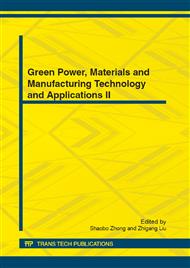p.407
p.412
p.417
p.423
p.430
p.436
p.440
p.445
p.451
Power Transmission and Transformation Project Using Analytic Network Process
Abstract:
Transmission and transformation is an important part of National Electric Power building, Based on the reality of our country, this paper proposed a comprehensive evaluation model, refer to the entire lifecycle environmental friendly, sophisticated products, independent research, cost optimization of management, etc, in order to supply reference for the decision-makers of power transmission and transformation projects.
Info:
Periodical:
Pages:
430-435
Citation:
Online since:
November 2012
Authors:
Keywords:
Price:
Сopyright:
© 2012 Trans Tech Publications Ltd. All Rights Reserved
Share:
Citation:


